SCHOOL TRIP WORKSHOPS
2025 SCHOOL TRIPS ARE AVAILABLE TO BOOK!
We have an amazing selection of workshops available for the 2025 season, plus a brand-new EYFS workshop! Perfect for teachers and students to experience a fun, hands-on and engaging session hosted by our trained educational staff.
Here at Chessington World of Adventures Resort, we offer 12 different curriculum-based workshops, covering exciting and relevant topics for all ages and key-stages. Scroll down to find out more.
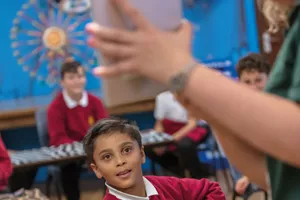
Super Senses
A relaxed session where children will be able to learn about the natural world and the animals around them using their senses. We will discover different types of animals and use animal artefacts to understand the differences between them, looking at things like the differences between feathers, scales, and fur, and learning animal sounds. Children will have the chance to get involved, discuss, and answer questions in a relaxed and friendly environment.

On the Beach
Focussing on the different animals that may live on the beach, in rockpools, and under the sea, this session will allow children to join in with sensory activities to learn about the seaside. There will be opportunities for children to join in with actions and explore different movements, with introduction to adaptations of aquatic animals, listening to the sounds of the ocean, and finding different beach items like shells. Children will learn about some of the animals they can see in our SEA LIFE Aquarium and Zoo during their trip.
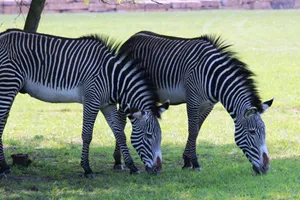
Clawsome Classification
A puzzle-solving workshop where students will work together to solve puzzles, unlock clues, and figure out the mystery animal! Each clue will reveal a new part of the animal’s taxonomy, habitat, or diet, and will show some of the different ways that we may classify this animal. Students will get the chance to handle animal artefacts, including replica animal skulls, and will use information learnt from these clues to understand classification.
Learning Outcomes:
- To identify a variety of animals and compare differences between them.
- To understand that animals can be grouped in different ways.
Curriculum Points:
- Identify and name a variety of common animals including fish, amphibians, reptiles, birds and mammals.
- Identify and name a variety of common animals that are carnivores, herbivores and omnivores.
- Using observations to compare and contrast animals, describing how they identify and group them.
- Grouping animals according to what they eat.
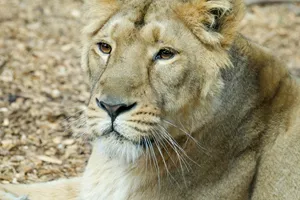
Ferocious Food Chains
Discover some of our incredible animals by using a variety of hands on and discussion-based activities and games, including being able to handle animal artefacts like replica animal skulls, and using cross-curricular skills like reading and mathematics to accurately create one of our zoo animal’s diets! These activities will help students begin to understand predators and prey, herbivores, carnivores and omnivores, and how animals fit into a food chain.
Learning Outcomes:
- To identify a variety of animals and the diet they eat
- To understand the differences between carnivores, herbivores, and omnivores
- To begin to create basic food chains and understand that animals get their energy from their food
Curriculum Points:
- Identify and name a variety of common animals that are carnivores, herbivores and omnivores
- Grouping animals according to what they eat
- Describe how animals obtain their food from plants and other animals, using the idea of a simple food chain, and identify and name different sources of food
- Identify that most living things live in habitats to which they are suited and describe how different habitats provide for the basic needs of different kinds of animals and plants, and how they depend on each other
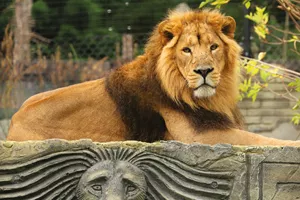
Animal CSI
Can you help us solve the mystery of the missing food? Students will use animal facts and clues to act as detectives and solve the mystery. Using cross-curricular skills, students will need to use teamwork and problem-solving to work through their evidence pack, and in doing so, will find out information on African species and habitats. Throughout the activity, the idea that animals and habitats co-exist will be introduced.
Learning Outcomes:
- To be able to identify a variety of animals, and their habitats and diets.
- To start understanding how animals are adapted to their habitats and how there are similarities between species in the same habitats.
Curriculum Points:
- Identify and name a variety of common animals including fish, amphibians, reptiles, birds and mammals.
- Identify and name a variety of common animals that are carnivores, herbivores and omnivores.
- Identify that most living things live in habitats to which they are suited and describe how different habitats provide for the basic needs of different kinds of animals and plants, and how they depend on each other.

Clawsome Classification
A puzzle-solving workshop where students will work together to solve puzzles and figure out the mystery animal! Each clue will reveal a new part of the animal’s taxonomy, habitat, or diet, and will show some of the different ways that we may classify this animal. Students will use teamwork and cross-curricular skills to work through puzzles involving maths, literacy, and science, and will get the chance to handle animal artefacts, including replica animal skulls.
Learning Outcomes:
- To understand that animals can be grouped in a variety of different ways, and why they fit into these groups.
- To start looking at food chains and the differences in diet of different animals.
Curriculum Points:
- Compare and contrast the diets of different animals and decide ways of grouping them according to what they eat.
- Recognise that living things can be grouped in a variety of ways.
- Describe how living things are classified into broad groups according to common observable characteristics and based on similarities and differences, including micro-organisms, plants and animals.
- Give reasons for classifying plants and animals based on specific characteristics.

Ferocious Food Chains
Discover some of our incredible animals by using a variety of hands on and discussion-based activities and games, including being able to handle animal artefacts like replica animal skulls, and using cross-curricular skills like reading and mathematics to accurately create one of our zoo animal’s diets! Students will gain understanding of food chains, and how every part of an ecosystem is important and relies upon each other.
Learning Outcomes:
- To identify different animals and the differences in their diets.
- To be able to understand adaptations of different animals that link to their diet.
- To be able to create food chains with a variety of species and to understand producers and consumers.
Curriculum Points:
- Identify that animals need the right types and amount of nutrition, and that they cannot make their own food; they get nutrition from what they eat.
- Pupils might work scientifically by: comparing the teeth of carnivores and herbivores and suggesting reasons for differences; finding out what damages teeth and how to look after them.
- Identify the different types of teeth and their simple functions.
- Construct and interpret a variety of food chains, identifying producers, predators and prey.
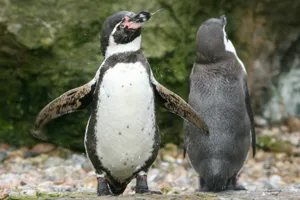
Animal Habitats and Adaptation
By looking closely at some of the uniquely adapted animals that live here at Chessington World of Adventures, students will learn about habitats and the struggles animals face in the wild, along with how they have adapted to live there. By the end of this session, students will have been able to create their own animal for a specific environment, using cross-curricular skills like art and science, and will be able to describe how it is adapted and why.
Learning Outcomes:
- To identify a variety of different animals, and the habitats that they live in.
- To understand that animals are adapted to their habitat, and how those adaptations are beneficial.
Curriculum Points:
- Identify that animals need the right types and amount of nutrition, and that they cannot make their own food; they get nutrition from what they eat.
- Recognise that environments can change and that this can sometimes pose dangers to living things.
- Comparing the teeth of carnivores and herbivores and suggesting reasons for differences.
- Identify how animals and plants are adapted to suit their environment in different ways.
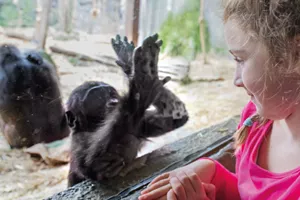
Endangered species and their conservation
Through an investigative activity, students will use clues and evidence, as well as cross-curricular skills like maths, to learn about one of the most endangered animals we have here at Chessington. We will be looking at why they are endangered, and exactly what this means. Students will learn about different types of conservation, including in the wild, at the zoo, and at home, by working together to finance their own conservation project to help this endangered species.
Learning Outcomes:
- To understand what endangered means, and to be able to identify some endangered species.
- To understand why animals may become endangered.
- An introduction to conservation, what this means, and how humans can help endangered species and habitats.
Curriculum Points:
- Recognise that living things have changed over time.
- Recognise that environments can change and that this can sometimes pose dangers to living things.
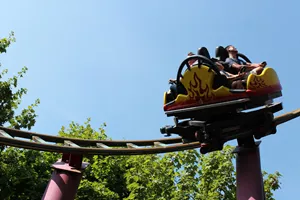
Fantastic Forces
During this workshop, we will look at some of the different examples of forces, and the ways that they are used in the operation of theme park rides at the resort. We will also discuss the use of forces in nature, by looking at some of the most extreme animals on the planet. We will then demonstrate examples of these forces in action with practical activities.
Learning Outcomes:
- To be able to identify different types of forces.
- To understand how these forces are used in action, specifically in our rides here at Chessington.
Curriculum Points:
- Compare how things move on different surfaces.
- Notice that some forces need contact between 2 objects, but magnetic forces can act at a distance.
- Explain that unsupported objects fall towards the earth because of the force of gravity acting between the earth and the falling object.
- Identify the effects of air resistance, water resistance and friction, that act between moving surfaces.
- Recognise that some mechanisms including levers, pulleys and gears allow a smaller force to have a greater effect.

Clawsome Classification
An escape room style workshop where students will work together to solve puzzles and figure out the mystery animal! Each clue will reveal a new part of the animal’s taxonomy, habitat, or diet, and will show some of the different ways that we may classify this animal. Students will use teamwork and cross-curricular skills to work through puzzles involving maths, literacy, and science, and will get the chance to handle animal artefacts including replica animal skulls.
Learning Outcomes:
- To understand that animals can be grouped in a variety of different ways, and why they fit into these groups.
- To identify variation between and within species, and understand how this makes animals suited to their lifestyle.
Curriculum Points:
- Differences between species.
- The variation between species and between individuals of the same species meaning some organisms compete more successfully, which can drive natural selection.
- Changes in the environment which may leave individuals within a species, and some entire species, less well adapted to compete successfully and reproduce, which in turn may lead to extinction.

Epic Ecosystems
Using a variety of hands on and discussion-based activities and games, including handling artefacts like replica skulls, students will be able to understand predators and prey, along with how animals fit into an ecosystem. We will touch on mutualistic relationships, food chains, and interdependence of species on each other. Groupwork activities will help students understand why every animal is important, with a brief look at conservation.
Learning Outcomes:
- To begin to understand photosynthesis, and its importance within the food chain.
- To understand the importance of biodiversity and the way each animal fits into the ecosystem.
- To identify different ecosystems and some of the species that live within them.
Curriculum Points:
- The dependence of almost all life on Earth on the ability of photosynthetic organisms, such as plants and algae.
- The interdependence of organisms in an ecosystem, including food webs and insect pollinated crops.
- How organisms affect, and are affected by, their environment.
- The importance of maintaining biodiversity.

Animal Habitats and Adaptation
By looking closely at some of the uniquely adapted animals that live here at Chessington World of Adventures, students will learn about habitats and the struggles animals face in the wild, along with how they have adapted to live there. By the end of this session, students will have been able to create their own animal for a specific environment, using cross-curricular skills like art and science, and will be able to describe how it is adapted and why.
Learning Outcomes:
- To identify a variety of different animals, and the habitats that they live in.
- To understand that animals are adapted to their habitat, and how those adaptations are beneficial.
Curriculum Points:
- Identify that animals need the right types and amount of nutrition, and that they cannot make their own food; they get nutrition from what they eat.
- Recognise that environments can change and that this can sometimes pose dangers to living things.
- Comparing the teeth of carnivores and herbivores and suggesting reasons for differences.
- Identify how animals and plants are adapted to suit their environment in different ways and that adaptation may lead to evolution.

Endangered species and their conservation
Through an investigative activity, students will use clues and evidence, as well as cross-curricular skills like maths, to learn about one of the most endangered animals we have here at Chessington. We will be looking at why they are endangered, and exactly what this means. Students will learn about different types of conservation, including in the wild, at the zoo, and at home, by working together to finance their own conservation project to help this endangered species.
Learning Outcomes:
- To understand what endangered means, and to be able to identify some endangered species.
- An introduction to conservation, what this means, and how humans can help endangered species and habitats.
- To understand the costs of conservation, and use maths and other skills to work out their own conservation plan.
Curriculum Points:
- Recognise that living things have changed over time.
- Explain effects of environmental changes on a species’ population.

Fantastic Forces
During this workshop, students will look at some of the different examples of forces, and the way that they are used in the operation of theme park rides at the resort. We will also discuss the use of forces in nature, by looking at some of the most extreme animals on the planet. Students will then demonstrate examples of these forces in action with a practical activity and use of cross-curricular skills.
Learning Outcomes:
- To be able to identify different types of forces.
- To understand how these forces are used in action, specifically in our rides here at Chessington.
Curriculum Points:
- Speed and the quantitative relationship between average speed, distance and time (speed = distance ÷ time).
- Forces: associated with rubbing and friction between surfaces, with pushing things out of the way; resistance to motion of air and water.
- Non-contact forces: gravity forces acting at a distance.
- Forces being needed to cause objects to stop or start moving, or to change their speed or direction of motion.

Clawsome Classification
An escape room style workshop where students will work together to solve puzzles and figure out the mystery animal! Each clue will reveal a new part of the animal’s taxonomy, habitat, or diet, and will show some of the different ways that we may classify this animal. Students will use teamwork and cross-curricular skills to work through puzzles involving maths, English, and science, and will get the chance to handle animal artefacts including replica animal skulls.
Learning Outcomes:
- To focus on the taxonomy of a particular species, and look at how it is related to others.
- To look at the adaptations that have evolved in this species and why those adaptations help.
Curriculum Points:
- Evolution occurs by the process of natural selection and accounts both for biodiversity and how organisms are all related to varying degrees.
- The characteristics of a living organism are influenced by its genome and its interaction with the environment.
- Developments in biology affecting classification.

Epic Ecosystems
Using a variety of hands on and discussion-based activities and games, including handling artefacts like replica skulls, students will be able to understand predators and prey, along with how animals fit into an ecosystem. We will touch on mutualistic relationships, food chains, and interdependence of species on each other. Groupwork activities will help students understand why every animal is important, with a brief look at conservation.
Learning Outcomes:
- To understand the importance of biodiversity and the how each species fits into it
- To understand that animals interact and depend on each other within an ecosystem, and that each is adapted to its role.
Curriculum Points:
- Living organisms may form populations of single species, communities of many species and ecosystems, interacting with each other, with the environment and with humans in many different ways.
- Living organisms are interdependent and show adaptations to their environment.
- Levels of organisation within an ecosystem.
- Some abiotic and biotic factors which affect communities; the importance of interactions between organisms in a community.
- How materials cycle through abiotic and biotic components of ecosystems.
- The role of microorganisms (decomposers) in the cycling of materials through an ecosystem
- Organisms are interdependent and are adapted to their environment.
- The importance of biodiversity.

Animal Habitats and Adaptation
A debate style workshop which will involve a short talk, then a groupwork task in which students will work together to discover adaptations of animals that we have at Chessington. They will create a case for why their given species is the best adapted out of the group. There will also be a short introduction to threats faced by these species in the wild and conservation.
Learning Outcomes:
- To understand that animals are adapted to their habitat, and how those adaptations are beneficial.
- To be able to understand some of the positive and negative effects of these adaptations, and that there is often a compromise to make in adaptation.
Curriculum Points
- Some abiotic and biotic factors which affect communities; the importance of interactions between organisms in a community.
- Organisms are interdependent and are adapted to their environment.
- The importance of biodiversity.
- Living organisms may form populations of single species, communities of many species and ecosystems, interacting with each other, with the environment and with humans in many different ways.
- Living organisms are interdependent and show adaptations to their environment.

Endangered species and their conservation
Through an investigative activity, students will use clues and evidence, as well as cross-curricular skills like maths to learn about one of the most endangered animals we have here at Chessington. We will be looking at why they are endangered, and exactly what this means. Students will learn about different types of conservation, including in the wild, at the zoo, and at home, and will use cross-curricular skills to work together and finance their own conservation project to help this endangered species.
Learning Outcomes:
- To understand what endangered means, and to be able to identify some endangered species.
- To understand the costs of conservation, and use maths and other skills to work out their own conservation plan.
- To understand the importance of biodiversity and how each species interacts with each other within an ecosystem.
- To understand the positive and negative impacts humans can have on an ecosystem, and how these can affect endangered species.
Curriculum Points:
- Positive and negative human interactions with ecosystems.
- The importance of biodiversity.
- Methods of identifying species and measuring distribution, frequency, and abundance of species within a habitat.
- Living organisms may form populations of single species, communities of many species and ecosystems, interacting with each other, with the environment and with humans in many different ways.
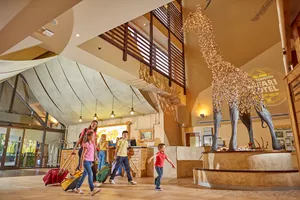
Business & Tourism
A classroom-based workshop where we will be looking at what goes on behind the scenes at Chessington World of Adventures and even Merlin Entertainments from a business perspective to understand how we are able to create, develop and continue the magic. There will be insights into how we market ourselves through advertising and the different platforms available to us, as well as an opportunity to put those skills into action.
Learning Outcomes:
- To understand the Merlin Entertainments business, and how it operates.
- An introduction to the different departments, needs, and opportunities that go into running a business.
Curriculum Points:
- Different types of leisure and tourism organisations.
- The reasons why people use leisure and tourism facilities.
- How leisure and tourism organisations operate as businesses.
- Employment opportunities in the leisure and tourism industry.
- The importance of recognising similarities and differences of: attitudes and cultures
- Where people go in their leisure time and why they select their chosen destination(s)
- Visitor attractions and activities, both in the UK and internationally
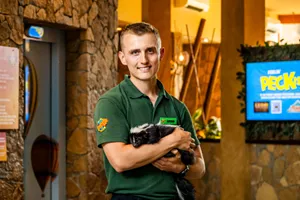
Careers & Aspirations
A classroom-based session which will look into the wide variety of different careers that make up our resort theme park and zoo. We will cover all aspects of our attraction including why each of these are important to our guests. There will be quotes and advise from different experts at Chessington World of Adventures Resort, as well as information on how to get into these roles.
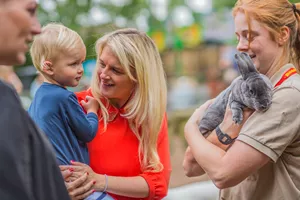
ZOO ANIMAL HUSBANDRY
This workshop is aimed at those in post 16 study and higher education, particularly those studying an Animal-related subject, Psychology, Behaviour, and Biology.
A flexible workshop that covers various different elements of zoo animal husbandry, especially exploring the unusual running of a zoo alongside a theme park. This workshop will look at subjects such as zoo animal behaviour, environmental enrichment, enclosure design, and positive reinforcement training. This workshop is majority classroom based, but includes hands on activities and tasks, as well as lots of visual aids and examples of zoo animal husbandry here at Chessington World of Adventures.

BUSINESS & TOURISM
A classroom-based workshop where we will be looking at what goes on behind the scenes at Chessington World of Adventures and even Merlin Entertainments from a business perspective to understand how we are able to create, develop and continue the magic. There will be insights into how we market ourselves through advertising and the different platforms available to us, as well as an opportunity to put those skills into action.
Learning Outcomes:
- To understand the Merlin Entertainments business, and how it operates.
- An introduction to the different departments, needs, and opportunities that go into running a business
Curriculum Points:
- Different types of leisure and tourism organisations.
- The reasons why people use leisure and tourism facilities.
- How leisure and tourism organisations operate as businesses.
- Employment opportunities in the leisure and tourism industry.
- The importance of recognising similarities and differences of attitudes and cultures.
- Where people go in their leisure time and why they select their chosen destination(s).
- Visitor attractions and activities, both in the UK and internationally.

Careers & Aspirations
A classroom-based session which will look into the wide variety of different careers that make up our resort theme park and zoo. We will cover all aspects of our attraction including why each of these are important to our guests. There will be quotes and advise from different experts at Chessington World of Adventures Resort, as well as information on how to get into these roles.
Workshops are available as an optional purchase of £50 per class. There is no minimum student requirement per workshop, but a maximum of 35 students is allowed. 1 free teacher is permitted per 10 paying students. Multiple workshops can be accommodated for larger groups.
We are proud to announce that we have won the award for Best UK Attraction at the 2023 School Travel Awards!
